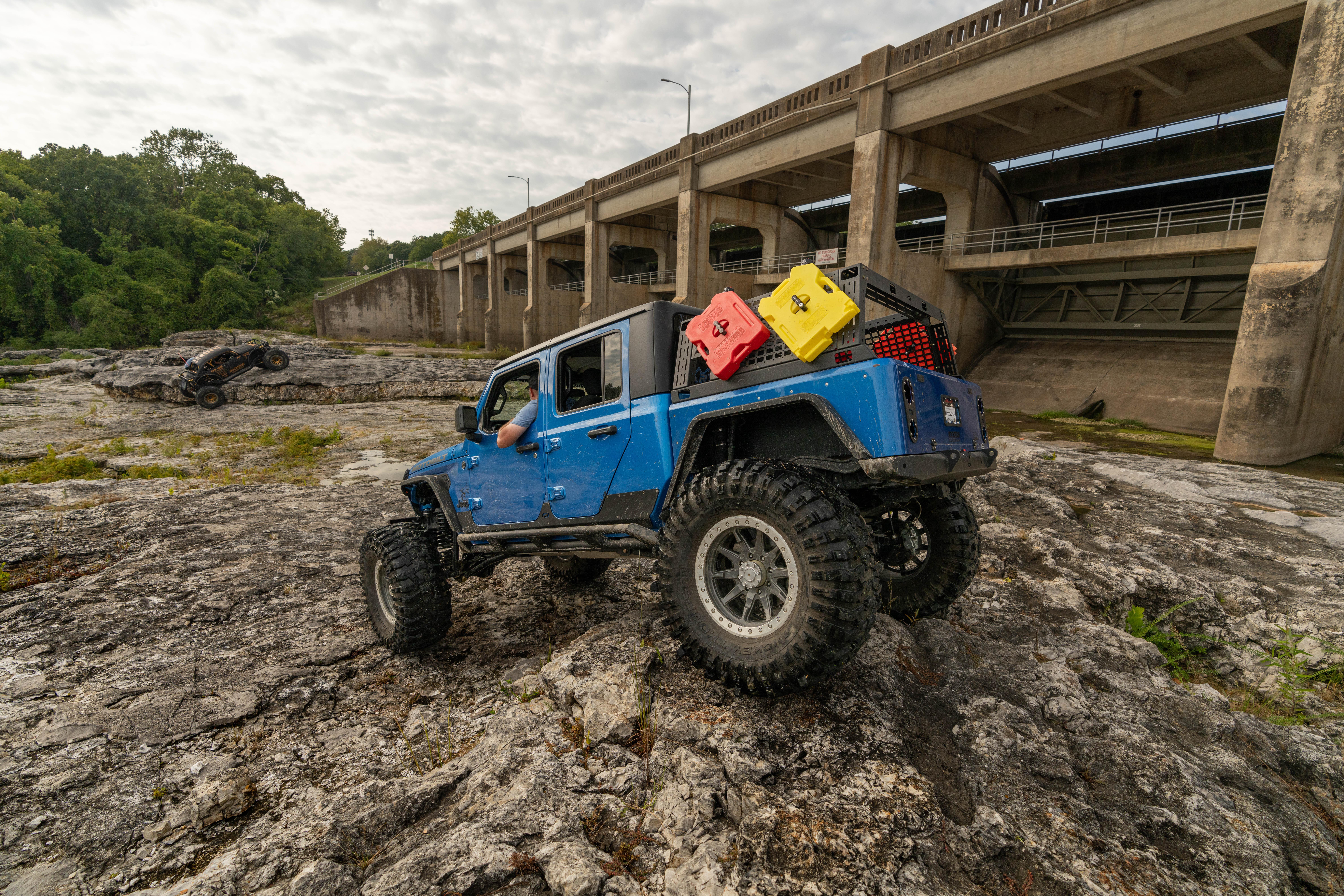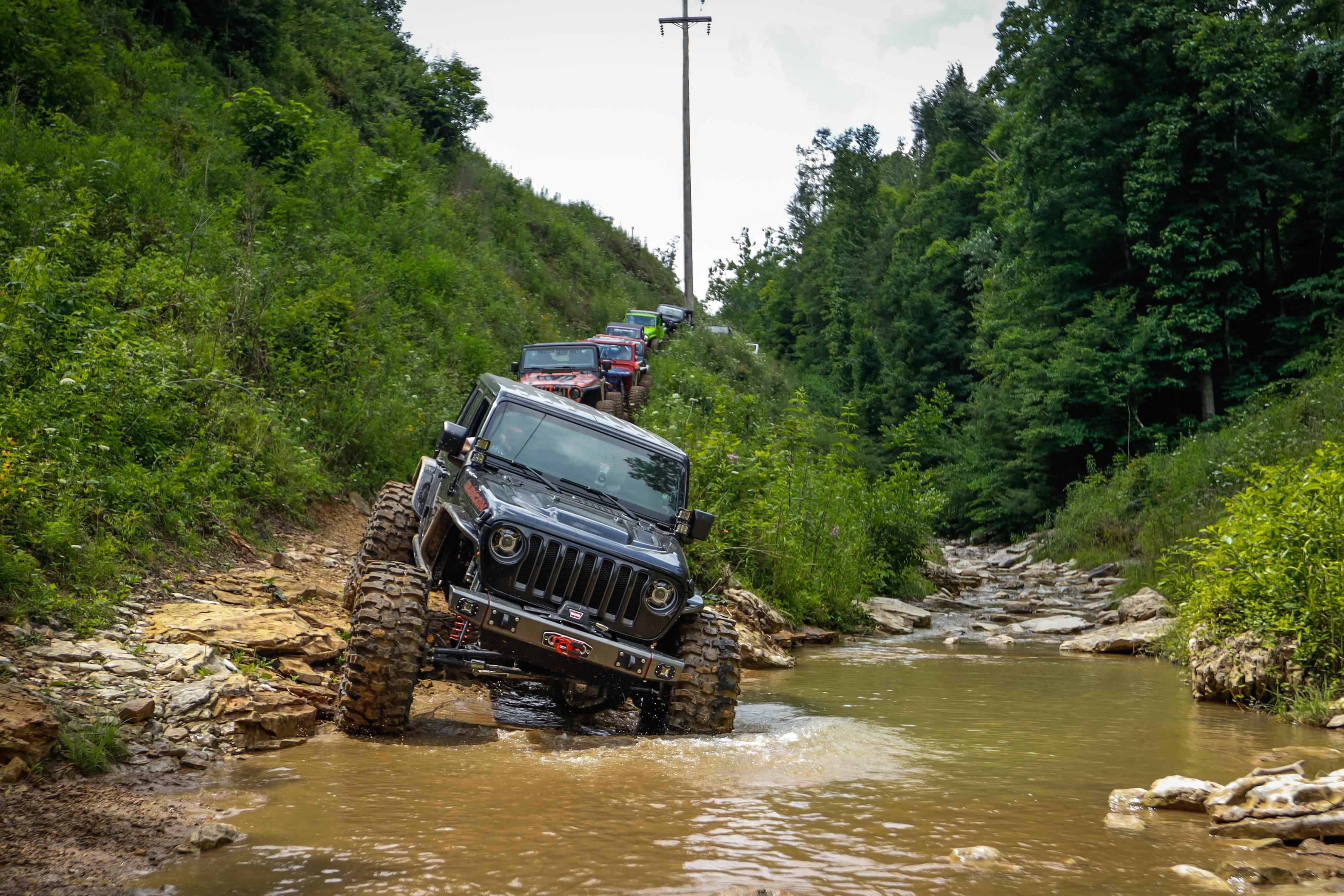Goal of this guide: The best trail rides start before you ever leave the driveway. A pre-trip inspection and the right gear can prevent breakdowns, keep your group safe, and make sure the fun lasts all day.
Before every trip, take time to go over your Jeep. Even small issues at home can become trip-ending problems on the trail.
Fluids: Check engine oil, coolant, transmission, transfer case, and differential levels. Look for leaks.
Torque Specs: Verify control arms, track bars, driveshaft bolts, and lug nuts are properly torqued.
Tires & Spares: Inspect tread, sidewalls, and pressures. Don’t forget the spare.
Battery: Make sure terminals are tight, clean, and corrosion-free.
Lights: Confirm headlights, taillights, and brake lights are all working.
Tools & Recovery Gear: Carry basic hand tools, tire repair kit, and recovery essentials like straps, shackles, and a jack.
Air Systems: Airing down only works if you can air back up. If your Jeep doesn’t have onboard air, bring a Powertank CO₂ system or a portable compressor.
ARW Note: Not sure if your Jeep is ready? Bring it to ARW Offroad — we’ll perform a pre-trip inspection so you can hit the trail with confidence.
Emergencies are rare, but when they happen you’ll be glad you prepared.
First Aid Kit: Stock with bandages, antiseptic, pain relievers, and personal medications.
Fire Extinguisher: We recommend Element extinguishers — compact, no pressure gauge to fail, and long discharge times. Mount them securely where they’re easy to reach.
Emergency Contact: Let someone know your trail plans and ETA home.
Texas heat or a long summer crawl can overwork your cooling system fast.
Radiators & Fans: An upgraded radiator and high-performance fan kit (like Mishimoto) helps keep temps stable during low-speed crawling.
Coolant Mix: Run the proper 50/50 mix for freeze and boil-over protection.
Hoses & Belts: Replace any that look cracked or worn before the trip.
Keep It Clean: Mud, dirt, and debris clogging the radiator is a common cause of overheating — spray it out regularly.
Your Jeep isn’t the only thing that can overheat.
Hydration: Bring plenty of water — more than you think you’ll need. Electrolytes help on long, hot days. Avoid glass bottles; reusable bottles or hydration packs work best.
Shade: A canopy, awning, or even just a wide-brim hat goes a long way.
Snacks & Fuel: Energy bars, trail mix, and other easy foods keep you going. Don’t forget fuel for the Jeep too.
Some off-road parks and dune areas require safety flags to help others see your Jeep before you crest a hill or blind rise. Requirements vary by location:
Some parks mandate mounting the flag on the front bumper.
Others require mounting at the rear of the vehicle.
Many specify an orange flag on a whip pole, usually 8–10 feet above the ground.
Chase Lights: Bright amber or red LED lights mounted high on the vehicle (often on the rear bumper or tire carrier). Essential in dust, rain, or low-light conditions so the rig behind you can keep track of your position.
Pro Tip: Always check the rules of the park you’re visiting. ARW can install proper mounts and chase lights so your Jeep complies with safety and visibility requirements.
A little prep goes a long way. From topping off fluids and carrying recovery gear to packing water and meeting safety rules like flag requirements, preparation is the difference between a smooth day and a ruined trip. At ARW Offroad, we offer pre-trip inspections, Element fire extinguishers, Mishimoto cooling upgrades, Rugged Radios, flag mounts, chase lights, and onboard air system installations — everything you need to stay safe, cool, and trail-ready.
The information in Offroad 101 is provided as a general guide for educational purposes. Off-road driving involves inherent risks to vehicles, passengers, and the environment. Even if your Jeep is mechanically capable of handling a trail, your personal experience and driving skill play a critical role in safety and success.
ARW Offroad is not responsible for vehicle damage, injury, or other consequences resulting from the use of this information. We encourage drivers to know their limits, wheel responsibly, and seek hands-on training when tackling advanced terrain.


